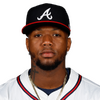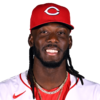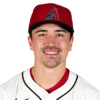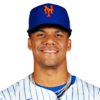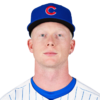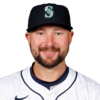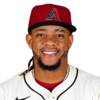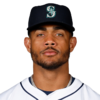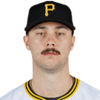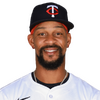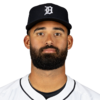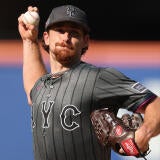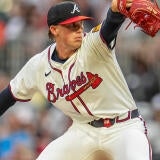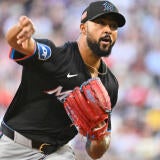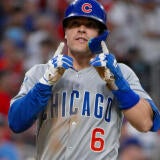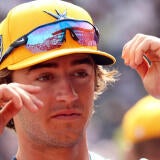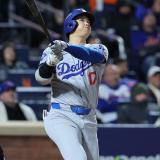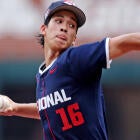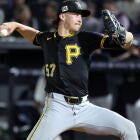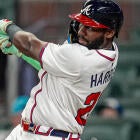2025 Fantasy Baseball: Redrafting the first two rounds for the second half
Pete Crow-Armstrong and Cal Raleigh are among those joining the ranks of the elite
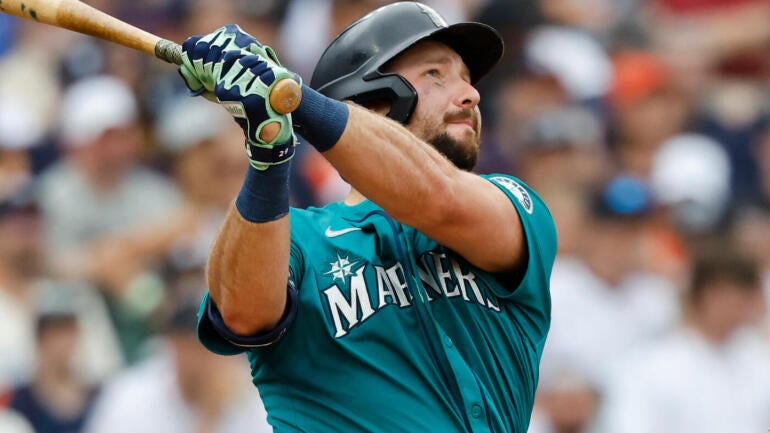
Take a breath. The All-Star break is here.
Your daily routine of cornering the latest breakout pitcher and plugging the latest injury leak can go on pause for now, allowing you to turn your attention to other Fantasy Baseball matters.
Here's one: What does the top of the player pool look like? It's probably not something you've thought about since your draft. All of those guys were divvied up at that point, and unless you have a raucous trade market, they're pretty much staying put.
But just for curiosity's sake, let's consider how the first two rounds might look if we could do them all over again. In case it needs to be said, we're not drafting for what's already happened. We're drafting for what's still to come.
Because the choices could change depending on format, I've settled on 5x5 Rotisserie as the format of record (though Head-to-Head points is depicted further below).
| 1 |
Aaron Judge
New York Yankees RF
|
| You may be surprised to learn how big of a gap Judge has opened up over No. 2 on this list. He's become an even bigger outlier for batting average than home runs, which is saying something given his historic achievements as a slugger. | |
| 2 |
Shohei Ohtani
Los Angeles Dodgers DH
|
| Whether because of his return to pitching this year or the injury he suffered swiping a bag in the World Series last year, Ohtani hasn't been as motivated to run this year, but he remains an MVP-caliber bat. | |
| 3 |
Bobby Witt
Kansas City Royals SS
|
| Witt rounded out a clear-cut top three coming into the year and still gets the benefit of the doubt from me even though the home run output has been lacking. He surged into the All-Star break, and I think even better things are in store in the second half. | |
| 4 |
Ronald Acuna
Atlanta Braves RF
|
| Acuna's return from a second ACL surgery has mostly been a rousing success, but his interest in stealing bases appears to be greatly diminished. A 40-homer, 20-steal pace is a reasonable expectation moving forward. | |
| 5 |
Jose Ramirez
Cleveland Guardians 3B
|
| If Ramirez seems like the obvious No. 3 to you, note that we're catching him at his absolute hottest with five home runs and eight stolen bases in his final 10 games before the break. His run and RBI totals also suffer from being in a bad Guardians lineup. | |
| 6 |
Elly De La Cruz
Cincinnati Reds SS
|
| De La Cruz has improved his strikeout rate enough that the batting average is no longer such a liability, and the power/speed contributions aren't so unlike Witt. | |
| 7 |
Kyle Tucker
Chicago Cubs RF
|
| Tucker has a case to rank as high as third (and in fact does in Head-to-Head points), but while he has no category weaknesses, he's unlikely to peak as high in home runs and/or stolen bases as those ranked ahead of him here. | |
| 8 |
Corbin Carroll
Arizona Diamondbacks RF
|
| This is a fairly conservative ranking for Carroll when you consider that he's underperformed his xBA and is a far more capable base-stealer than he's shown us this year. The power gains coincide with improved exit velocities and appear to be durable. | |
| 9 |
Juan Soto
New York Mets RF
|
| I suspect that his .311/.455/.659 slash line since the start of June has ended the seemingly annual panic over Soto, particularly since those numbers are right in line with his expected stats. He's also taken to stealing bases like never before. | |
| 10 |
Tarik Skubal
Detroit Tigers SP
|
| Determining when to grab the first starting pitcher (something I'm rarely inclined to do) is always tricky, but this marks the point when my confidence in the elite hitters dips slightly. Led by Skubal, who has improved in every respect over his Cy Young-winning 2024, there's an elite starting pitcher quartet that's an order of magnitude better than the rest. | |
| 11 |
Zack Wheeler
Philadelphia Phillies SP
|
| Now 35 and purportedly two years away from retiring, Wheeler somehow keeps getting better and better and is poised to win his first Cy Young this year. | |
| 12 |
James Wood
Washington Nationals LF
|
| You might think Wood's high strikeout rate and low pull-air rate, which both rank among the worst in the league, would undermine his physical tools more than they do, but he's apparently such a freak that it hardly matters. | |
| 13 |
Pete Crow-Armstrong
Chicago Cubs CF
|
| I've come a long way on Crow-Armstrong, who I marked as a preseason bust and wasn't buying at all for the first quarter of the season, but I'll still bet against him sustaining his 42-homer pace given his poor plate discipline and middling exit velocities. His 45-steal pace is more plausible. | |
| 14 |
Cal Raleigh
Seattle Mariners C
|
| This is about as high as you'll ever see me rank a catcher, but the advantage Raleigh offers at the position is unprecedented. Not only is he poised to become the first ever with 50 homers, but his current pace of 64 would be the most at any position for someone without steroid ties. It's implausible to me that someone at the most attrition-afflicted position could sustain such a pace, which is why Raleigh is 14th for me here and not third. | |
| 15 |
Garrett Crochet
Boston Red Sox SP
|
| Crochet has been every bit as good as Skubal and Wheeler this year, completely justifying the massive prospect haul that the Red Sox gave up for him. The one hesitation is that he's already within 20 innings of his career high, which could lead to some hiccups as the season draws to a close. | |
| 16 |
Ketel Marte
Arizona Diamondbacks 2B
|
| Aside from Raleigh at catcher -- who, again, is a near mathematical certainty to cool off in the second half -- Marte might be the biggest outlier at any position, which says as much about second base as Marte himself. There's nothing fake about what he's doing, though, and it makes him a plus in every category but stolen bases. | |
| 17 |
Fernando Tatis
San Diego Padres RF
|
| There's a temptation to rank Tatis higher given that his actual stats fall short of his expected stats, but the same was also true in 2023 and 2024. By now, it seems like a natural consequence of his low pull-air rates, in which case I'm inclined to take his .268/.364/.447 slash line at face value. He's still on a 27-homer, 35-steal pace, though. | |
| 18 |
Julio Rodriguez
Seattle Mariners CF
|
| Rodriguez closed out a disappointing first half with a huge series in which he homered three times and swiped two bags, putting him on a 23-homer, 28-steal pace that vaults him back into this discussion. Truthfully, though, I would have ranked him here regardless. All of the Statcast metrics say he's the same player as always, and he has a career .903 OPS in the second half compared to .737 in the first half. | |
| 19 |
Francisco Lindor
New York Mets SS
|
| Lindor's production has suffered a bit since breaking his right pinkie toe on June 4, but the injury should be about healed now. His overall pace is in line with the past couple years, marking him as a four-category standout with a middling batting average. | |
| 20 |
Paul Skenes
Pittsburgh Pirates SP
|
| Skenes rounds out the elite quartet at starting pitcher (and the only ones worth mentioning in this space), but he has the clearest flaws of the four. His strikeout rate isn't on the same level, his supporting cast severely limits his win potential, and his innings are being restricted, it seems, given how short his recent outings have been. | |
| 21 |
Jackson Chourio
Milwaukee Brewers CF
|
| From a 5x5 perspective, Chourio has much in common with Tatis and Rodriguez, but I wanted to separate him off from those other two because he has no on-base ability to speak of and some ugly exit velocity data as well. At some point, the production speaks for itself, but I have an easier time seeing Tatis and Rodriguez blow out expectations in the second half than Chourio. | |
| 22 |
Gunnar Henderson
Baltimore Orioles SS
|
| An intercostal strain set Henderson back to begin the year, and while the batting average has steadily ticked up since about mid-April, the home runs have continued to lag. The way he impacts the ball, both in terms of velocity and angle, is largely unchanged, though, and I'm inclined to give enormous leeway to a player who proves capable of first-round production prior to turning 25. | |
| 23 |
Kyle Schwarber
Philadelphia Phillies DH
|
| Schwarber's launch angle got a little steep in his first two years in Philadelphia, but he's corrected it over the past two years, making him no longer such a liability in batting average while continuing to deliver massive home run, run, and RBI totals. The career-high steals pace seems too good to be true, but home runs are more important in this environment anyway. | |
| 24 |
Pete Alonso
New York Mets 1B
|
| First base is the one position not yet represented in these first two rounds (excluding relief pitcher, which never will be), so we'll close out with Alonso, whose redemption tour has slowed down in recent weeks but whose Baseball Savant page still burns bright red, complete with an average exit velocity nearly 5 mph higher than usual. | |
Trea Turner
Philadelphia Phillies SS
|
| It was a close call between him and Alonso for the final spot, but I ultimately decided Alonso's advantages in home runs and RBI are more valuable than Turner's in stolen bases, presuming their batting averages come out about the same (as I suspect they will). |
Mookie Betts
Los Angeles Dodgers SS
|
| Betts is losing exit velocity at a time when more is needed to put the ball in the bleachers, which I think goes most of the way to explaining his struggles this year. You can never rule out a generational talent like him finding a way to make it work, but I managed to come up with 24 players I trust more. |
Byron Buxton
Minnesota Twins CF
|
| I don't need to explain this one, do I? The injury history speaks for itself. |
Riley Greene
Detroit Tigers LF
|
| Greene is a good player and all, but he doesn't hit the ball quite hard enough to sustain a 41-homer pace and doesn't make contact near enough to sustain a .284 batting average. In short, I think a June surge inflated his numbers, and the expected stats back up this idea. |
C.J. Abrams
Washington Nationals SS
|
| If I'm leaving out Turner, then I'm leaving out Abrams, who isn't as polished or proven and has virtually the same stat line. It's to his credit that he's even in the discussion, though. |
For H2H points
Round 1
1. Aaron Judge, OF, NYY
2. Shohei Ohtani, DH/SP, LAD
3. Kyle Tucker, OF, CHC
4. Juan Soto, OF, NYM
5. Ronald Acuna, OF, ATL
6. Jose Ramirez, 3B, CLE
7. Bobby Witt, SS, KC
8. Tarik Skubal, SP, DET
9. Zack Wheeler, SP, PHI
10. Cal Raleigh, C, SEA
11. Ketel Marte, 2B, ARI
12. Garrett Crochet, SP, BOS
Round 2
13. Kyle Schwarber, OF, PHI
14. Elly De La Cruz, SS, CIN
15. Corbin Carroll, OF, ARI
16. James Wood, OF, WAS
17. Fernando Tatis, OF, SD
18. Pete Crow-Armstrong, OF, CHC
19. Francisco Lindor, SS, NYM
20. Pete Alonso, 1B, NYM
21. Paul Skenes, SP, PIT
22. Gunnar Henderson, SS, BAL
23. Trea Turner, SS, PHI
24. Mookie Betts, SS/OF, LAD




